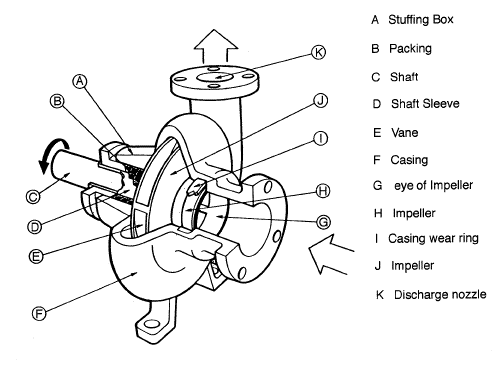Back Next
Pump Construction
Pumps mounted on fire engines are relatively simple contraptions. Most are midship mounted and are designed to put out 1500 to 2000 gpm. More often than not, a fire pump sits separate from the drive shaft of the engine and can be engaged and disengaged. Shifting into "Pump Gear" is just as simple as shifting to drive or reverse. That being said, all fire pumps receive energy in roughly the same pattern of energy transfer. The chemical energy in fuel (diesel or gasoline) is released through combustion inside an engine. The power stroke of said engine converts that chemical energy to mechanical energy, which is transferred through the pistons to the drive shaft. As the pump in engaged, a gear is lowered from the transfer case onto the drive shaft. This system of gears now energized in the pump turn an impeller.


Shown here are two single stage impellers. As the impeller spins at speeds in excess of 750 revolutions per minute water is drawn in and spun out into the volute due to centrifugal force. The volute is basically a section of piping that reduces in diameter. Since Pressure=Force/Area, the decreasing cross sectional area of the volute amplifies the compressional forces on the water, creating pressures close to 300psi. Two stage pumps are also sold commercially, but they are used more for high rise fire fighting operations due to their ability to pump more gpm's at lower pressures. Otherwise, they are more complicated and the difference in pressure to volume output compared to single stage pumps is not as significant.